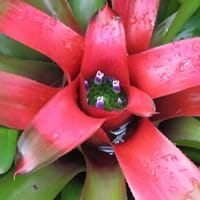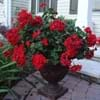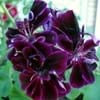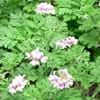Life Span
Annual
Perennial
Type
Tender Perennial
Shrub
Origin
South America, Brazil
North America, United States, Northeastern United States, Mid-Atlantic United States, Southeastern United States, Canada
Types
Not Available
Red chokeberry, Purple chokeberry
Habitat
Tropical rainforest
Anthropogenic, Boggy areas, Cliffs, Fens, Swamps, Terrestrial, Wet lands, Woodlands
USDA Hardiness Zone
Not Available
3-8
AHS Heat Zone
Not Available
8-1
Sunset Zone
Not Available
A2, A3, 1a, 1b, 2a, 2b, 3a, 3b, 4, 5, 6, 7
Habit
Rosette/Stemless
Thicket/Colonizing
Minimum Height
Not Available
Minimum Width
Not Available
Flower Color
Not Available
Not Available
Flower Color Modifier
Bicolor
Not Available
Fruit Color
Not Available
Purplish-black
Leaf Color in Spring
Not Available
Not Available
Leaf Color in Summer
Not Available
Not Available
Leaf Color in Fall
Not Available
Not Available
Leaf Color in Winter
Light Green
Not Available
Leaf Shape
Rosette
Elliptic
Plant Season
Spring, Summer, Fall, Winter
Spring, Summer, Fall
Sunlight
Not Available
Full Sun, Partial Sun, Partial shade
Growth Rate
Not Available
Medium
Type of Soil
Sand
Clay, Loam
The pH of Soil
Not Available
Acidic, Neutral, Alkaline
Soil Drainage
Well drained
Average
Bloom Time
Not Available
Late Spring, Early Summer
Tolerances
Drought
Not Available
Where to Plant?
Ground
Ground, Pot
How to Plant?
Tip cutting
Cuttings, Divison, Seedlings
Plant Maintenance
Medium
Medium
Watering Requirements
Medium
Average Water Needs, Do Not over Water, Requires regular watering
In Summer
Lots of watering
Lots of watering
In Spring
Moderate
Moderate
In Winter
Average Water
Average Water
Soil pH
Not Available
Acidic, Neutral, Alkaline
Soil Type
Sand
Clay, Loam
Soil Drainage Capacity
Well drained
Average
Sun Exposure
Not Available
Full Sun, Partial Sun, Partial shade
Pruning
Remove damaged leaves, Remove dead branches, Remove dead leaves
Prune after flowering, Remove branches that rub together, Remove damaged leaves, Remove dead branches, Remove dead leaves, Remove diseased branches by the tool's blades dipped into the alcohol solution
Fertilizers
All-Purpose Liquid Fertilizer
10-10-10, All-Purpose Liquid Fertilizer, Apply N-P-K
Pests and Diseases
Red blotch
Red blotch
Plant Tolerance
Drought
Not Available
Flower Petal Number
Single
Not Available
Fragrant Fruit
Not Available
No
Fragrant Leaf
Not Available
No
Fragrant Bark/Stem
Not Available
No
Showy Bark
Not Available
No
Foliage Texture
Not Available
Not Available
Foliage Sheen
Not Available
Not Available
Self-Sowing
Not Available
No
Attracts
Hummingbirds
Not Available
Allergy
Not Available
Anaphylaxis
Aesthetic Uses
Showy Purposes
Showy Purposes
Beauty Benefits
Not Available
Good for skin
Environmental Uses
Air purification
Air purification, Food for birds, Wildlife
Medicinal Uses
Not Available
anti-cancer, Antioxidants, Cold
Part of Plant Used
Flowers, Leaves
Fruits
Other Uses
Showy Purposes
Pectin
Used As Indoor Plant
No
No
Used As Outdoor Plant
Yes
Yes
Garden Design
Container, Feature Plant, Foundation, Groundcover, Mixed Border, Tropical
Foundation, Mixed Border
Botanical Name
NEOREGELIA
ARONIA melanocarpa
Common Name
Neoregelia
Black Chokeberry
In Hindi
Neoregelia
Black Chokeberry Shrub
In German
Neoregelia
Schwarz Aronia Strauch
In French
Neoregelia
Noir Chokeberry Arbuste
In Spanish
neoregelia
Chokeberry negro Arbusto
In Greek
neoregelia
Μαύρο Chokeberry θάμνων
In Portuguese
neoregelia
Chokeberry preto Arbusto
In Polish
Neoregelia
Krzew aronii
In Latin
Neoregelia
Lichen Frutex
Phylum
Magnoliophyta
Magnoliophyta
Class
Liliopsida
Magnoliopsida
Order
Bromeliales
Rosales
Family
Bromeliaceae
Rosaceae
Clade
Angiosperms, Commelinids, Monocots
Angiosperms, Eudicots, Rosids
Tribe
Not Available
Maleae
Subfamily
Bromelioideae
Amygdaloideae
Number of Species
Not Available
Properties of Neoregelia and Black Chokeberry
Wondering what are the properties of Neoregelia and Black Chokeberry? We provide you with everything About Neoregelia and Black Chokeberry. Neoregelia has thorns and Black Chokeberry doesn't have thorns. Also Neoregelia does not have fragrant flowers. Neoregelia has allergic reactions like Not Available and Black Chokeberry has allergic reactions like Not Available. Compare all the properties and characteristics of these two plants. Find out which of these plant can be used as indoor plant. If you are interested to decorate your house and garden, find out aesthetic uses, compare them and select the plant which will beautify your surrounding. Along with beautification, try comparing medicinal and edible uses of Neoregelia and Black Chokeberry and you can choose the plant having best and most benefits.
Season and Care of Neoregelia and Black Chokeberry
Season and care of Neoregelia and Black Chokeberry is important to know. While considering everything about Neoregelia and Black Chokeberry Care, growing season is an essential factor. Neoregelia season is Spring, Summer, Fall and Winter and Black Chokeberry season is Spring, Summer, Fall and Winter. The type of soil for Neoregelia is Sand and for Black Chokeberry is Clay, Loam while the PH of soil for Neoregelia is Not Available and for Black Chokeberry is Acidic, Neutral, Alkaline.
Neoregelia and Black Chokeberry Physical Information
Neoregelia and Black Chokeberry physical information is very important for comparison. Neoregelia height is Not Available and width Not Available whereas Black Chokeberry height is 182.88 cm and width 182.88 cm. The color specification of Neoregelia and Black Chokeberry are as follows:
Neoregelia flower color: Not Available
Neoregelia leaf color: Not Available
Black Chokeberry flower color: Not Available
- Black Chokeberry leaf color: Not Available
Care of Neoregelia and Black Chokeberry
Care of Neoregelia and Black Chokeberry include pruning, fertilizers, watering etc. Neoregelia pruning is done Remove damaged leaves, Remove dead branches and Remove dead leaves and Black Chokeberry pruning is done Prune after flowering, Remove branches that rub together, Remove damaged leaves, Remove dead branches, Remove dead leaves and Remove diseased branches by the tool's blades dipped into the alcohol solution. In summer Neoregelia needs Lots of watering and in winter, it needs Average Water. Whereas, in summer Black Chokeberry needs Lots of watering and in winter, it needs Average Water.





